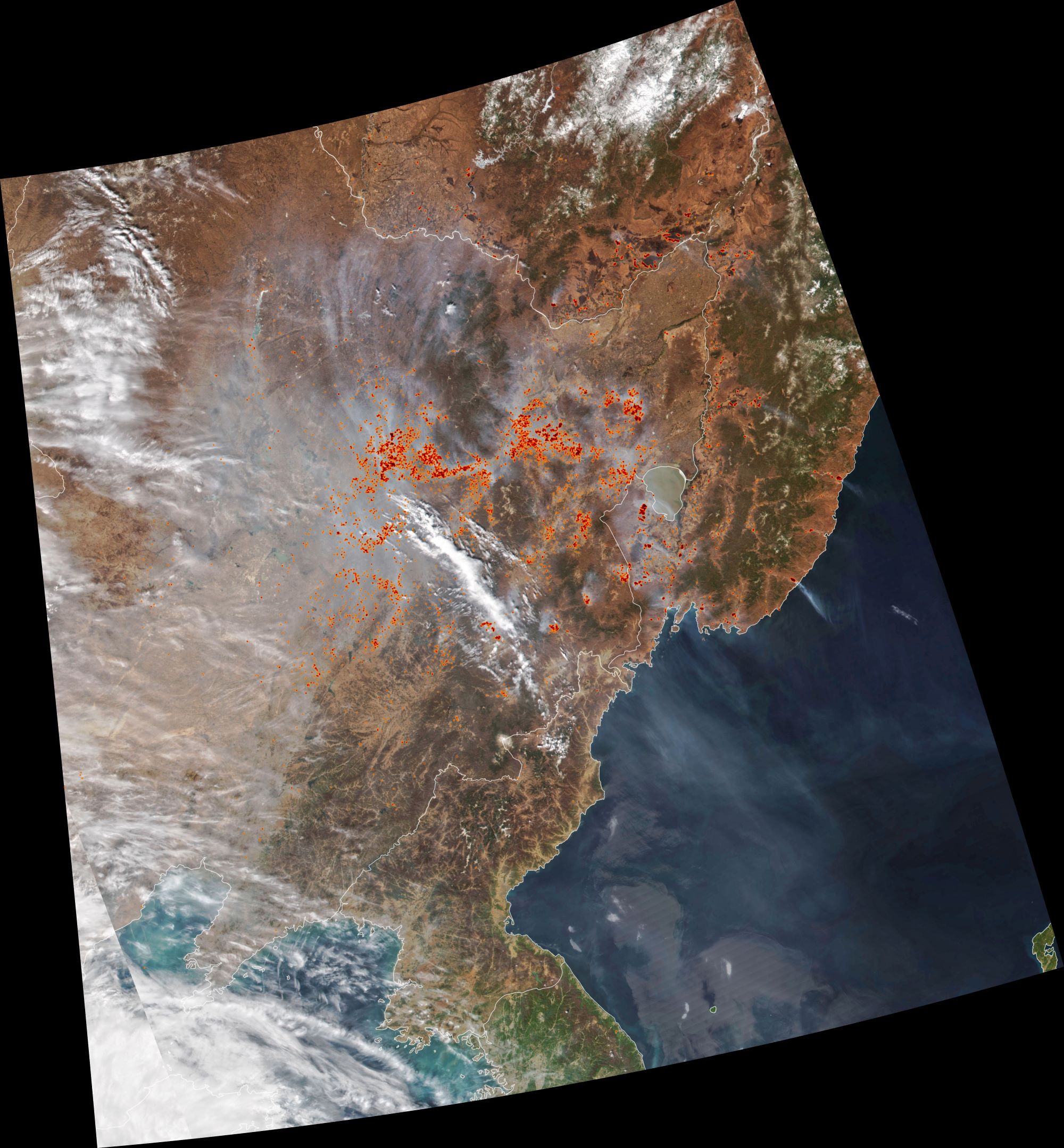[:ja]NASAの地球観測衛星Suomi NPPが撮影した中国黒竜江省の焼き畑の様子です。

黒竜江省を含む東北三省は、計画経済時代から改革開放を経て現在に至るまで、中国で最も重要な穀倉地帯として、大きく発展を遂げてきました。焼き畑は、畑に残った昨季の残骸を取り除く目的で行われますが、本来、焼き畑農業は森林や原野を焼き、農作物の栽培を数年行った後、土地が回復するのを数十年間待って再利用する農法です。地域によっては、十分な休閑期間をとらないまま栽培を行うため、土地がやせてしまい思うように収穫できず、新たな農地を求めて森林を次々に焼くという悪循環が起き、また、煙害による環境問題や二酸化炭素排出による地球温暖化への影響が懸念されています。
地上の様子はこちらです。

参考文献: Fires in the Far East (NASA Earth Observatory)
地球俯瞰画像を見る: LiVEARTH
[Earthview Wonders] No.1284: Slash-and-burn in Heilongjiang🇨🇳
NASA’s Suomi NPP satellite captured the heavy smoke arising due to slash-and-burn fires in Heilongjiang, China.

With millions of hectares of corn, rice, and beans sown in Heilongjiang each year, this area has long been one of the country’s most important food-producing areas. For many Heilongjiang farmers, one of the first steps in raising this year’s crop involves burning off the remaining bits of last year’s plants to remove debris from the fields and get them ready for planting in May. This practice leads to hazy, smoke-filled skies, as shown by this image. Originally, slash-and-burn agriculture, or fire-fallow cultivation, is a farming method that involves the cutting and burning of plants in a forest or woodland to create a field called a swidden. It is believed that the ash from burning functions as neutralizer of the soil acidity and adjusts nitrogen content.
The local scenery on the ground is as follows.

Reference: Fires in the Far East (NASA Earth Observatory)
See earthview photo gallery: LiVEARTH[:]